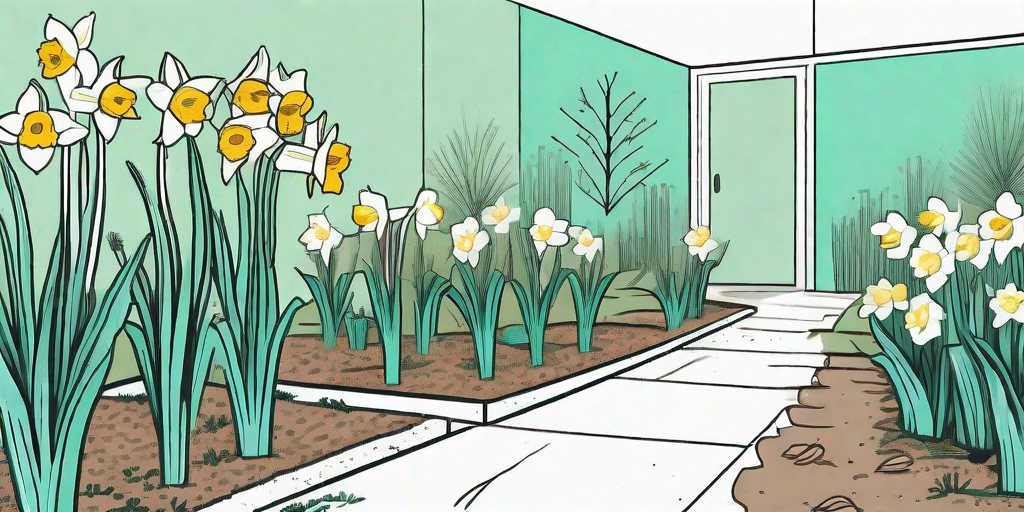
Are you tired of looking out your window and seeing a garden that's more "blah" than "blooming"? Do you long for a garden that's as vibrant and cheerful as a spring morning? Well, my friend, you're in luck. Today, we're going to talk about how to take your garden from drab to fab with the help of some delightful daffodils. So, put on your gardening gloves, grab your trowel, and let's get started!
Why Daffodils?
First things first, why daffodils? Well, aside from their sunny disposition and their ability to make even the gloomiest day seem a little brighter, daffodils are also incredibly hardy and easy to grow. They're like the garden equivalent of that friend who's always cheerful, no matter what life throws at them.
Plus, daffodils are perennials, which means they'll come back year after year, bringing a little bit of sunshine to your garden each spring. And let's be honest, who doesn't love a plant that requires minimal effort but provides maximum reward?
Transplanting Daffodils: The Basics
When to Transplant
Timing is everything when it comes to transplanting daffodils. The best time to do it is after the flowers have bloomed and the leaves have started to turn yellow. This usually happens in late spring or early summer. If you try to transplant them too early, you might interrupt their blooming cycle, and nobody wants that.
So, how do you know when it's the right time? Well, the leaves will give you a clue. When they start to turn yellow and die back, it's a sign that the daffodils are ready to be moved. But remember, patience is a virtue, especially in gardening.
How to Transplant
Now that you know when to transplant, let's talk about how to do it. First, you'll need to dig up the daffodil bulbs. Be careful not to damage them as you dig. Once you've got the bulbs, it's time to find them a new home.
Choose a spot in your garden that gets plenty of sun. Daffodils are sun worshippers, so the more sun they get, the happier they'll be. Dig a hole that's about three times as deep as the bulb is tall, place the bulb in the hole with the pointy end up, and then cover it with soil. And voila! You've just transplanted a daffodil.
Advanced Transplanting Techniques
Grouping Daffodils
While a single daffodil can certainly brighten up a garden, a group of daffodils can make it shine. When transplanting daffodils, consider planting them in groups. Not only will this create a more dramatic display, but it will also help the daffodils support each other as they grow.
Just remember to give each bulb enough space. Daffodils like to spread out, so plant the bulbs about 3-6 inches apart. This will give them enough room to grow without crowding each other out.
Layering Bulbs
Want to take your garden to the next level? Try layering your bulbs. This technique involves planting different types of bulbs at different depths in the same hole. The result is a garden that blooms in waves, providing a constant display of color throughout the spring.
Start by digging a hole that's deep enough for the largest bulbs. Place the bulbs in the hole, cover them with a layer of soil, and then add the next set of bulbs. Repeat this process until all the bulbs are planted. It's like making a lasagna, but with bulbs instead of pasta.
Frequently Asked Questions
Still have questions? Don't worry, we've got answers. Here are some of the most common questions people have about transplanting daffodils.
Can I transplant daffodils in the fall?
While it's possible to transplant daffodils in the fall, it's not ideal. The bulbs need time to establish themselves before the winter, and transplanting them in the fall doesn't give them much time to do that. It's best to wait until the spring or early summer to transplant daffodils.
What if my daffodils don't bloom after transplanting?
Don't panic! It's not uncommon for daffodils to take a year off from blooming after they've been transplanted. They're just taking some time to get settled in their new home. Give them some time, and they should be back to their blooming best in no time.
Conclusion
And there you have it! Everything you need to know to transform your garden with transplanting daffodils. With a little bit of effort and a lot of patience, you can create a garden that's as vibrant and cheerful as a field of blooming daffodils. So, what are you waiting for? Get out there and start digging!















